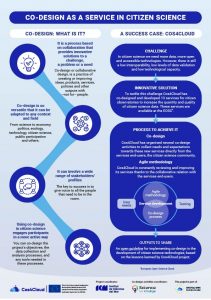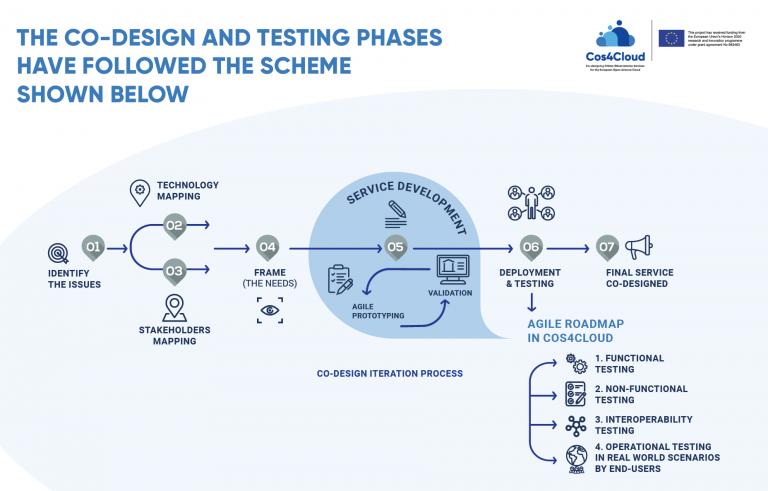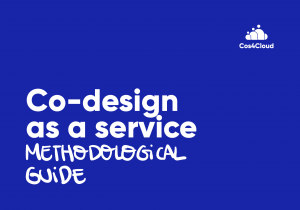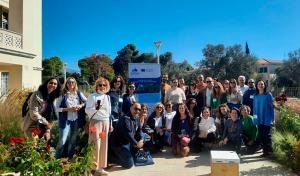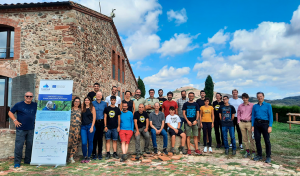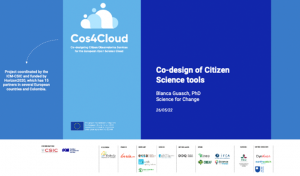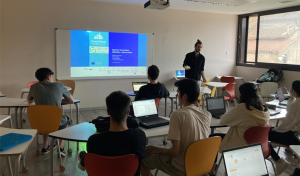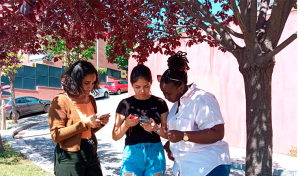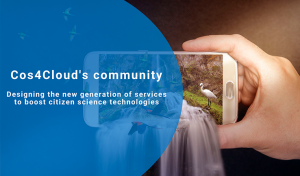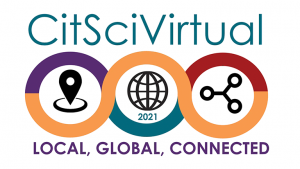Co-design refers to collaborations where several stakeholders actively join forces to tackle a shared challenge. Participating stakeholders can belong to any sector of society, such as civil society, industry, government or academia. The engagement of these four major sectors is commonly referred to as the ‘quadruple helix model’. The coordinator of the co-design methodology is Science for Change.
Co-design description and highlights:
The Cos4Cloud project uses co-design methodologies for prototyping the services from the bottom up, with the quadruple helix, to allow for customization at all required phases. The final step of co-design is testing the services in real scenarios to keep improving their functionalities during and after the project’s lifetime, according to the end-users feedback. Our main goal has been to align mutual interests to tackle the technological challenges of citizen science by organizing face-to-face workshops, online activities and testing events in the different phases of each service development.
Of the Cos4Cloud members participate in co-design activities
Learn how to use co-design in citizen science & software development:
Download our guide! The guide includes an introduction to the world of co-design: main definitions and mindsets of co-design and design thinking, as well as some tools to apply creative methodologies. Secondly, it explains the co-design methodology followed in Cos4Cloud, together with some key concepts, such as citizen science and citizen observatories. Finally, it provides a practical step-by-step guide to implementing this methodology in citizen science and software development.


Identify the issues
Issues and needs identified in a specific Citizen Observatory (CO) for service co-design.

Technology Mapping
Exploration of existing platforms from a technological point of view, TRL status and gradient.

Stakeholders Mapping
Mapping the various stakeholders who will participate in co-designing specific services.

Frame (the need/ problem)
Set goals and analyse challenges to better frame the problem, involving key stakeholders.

Service development
In this phase, the service will be co-designed using the Agile Methodology.

Deployment and testing
At this stage, the new, co-designed service will be put in place to get further feedback from users.

Final service co-designed
At this stage, the service will be co-designed, already in place and at the desired TRL (target TRL 8/9).

Improve citizen science technologies by giving your opinion on the specific technological services that we are developing, and, of course, have a nice time chatting with a diverse group of people about citizen science. Interested? Contact Ángela Justamante: a.justamante@creaf.uab.cat
Our community is interdisciplinary and diverse. Some of our members are scientists, naturalists, managers of a citizen observatory, data scientists, developers, designers, coders, makers, general public, among other profiles. Get to know some of them!

